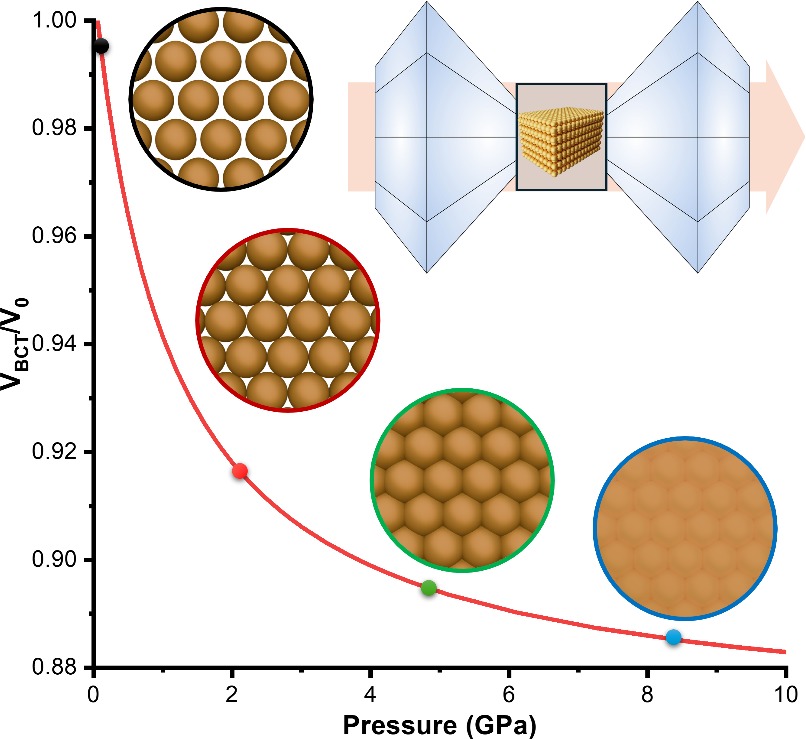Elucidating Supercrystal Mechanics and Nanoparticle Size and Shape Effects under High Pressure
 |
01/10/2024 Supercrystals, extended lattices of closely packed nanoparticles (NPs), present exciting possibilities for various applications. Under high pressures, typically in the gigapascal (GPa) range, supercrystals undergo significant structural changes, including adjustable inter-particle distances, phase transformations, and the formation of new nanostructures through coalescence. While prior research has focused on ligand engineering's impact on supercrystal mechanical response, the influence of NP shape remains unexplored, especially for NPs larger than 10 nm coated with hydrosoluble ligands. This study examines the effects of NP shape on the mechanical properties of supercrystals using high-pressure small-angle X-ray scattering (HP-SAXS) and focused ion beam-scanning electron microscopy (FIB-SEM) tomography. Notably, supercrystals exhibit higher hardness levels compared to previously reported values for gold supercrystals, attributed to the use of larger nanoparticles. Spherical and tetrahedral NPs rearrange before collapsing under pressure, whereas rods and octahedra coalesce without prior structural rearrangement, likely due to their higher packing fraction. Additionally, anisotropic deformation of NP lattices and sintering does not always correlate with deviatoric stresses. These findings refine the understanding of complex processes governing supercrystal structure under high pressure, opening new avenues for NP engineering and advancing plasmonic applications under extreme conditions. Nice collaborative work! DOI: 10.1002/sstr.202400303 |